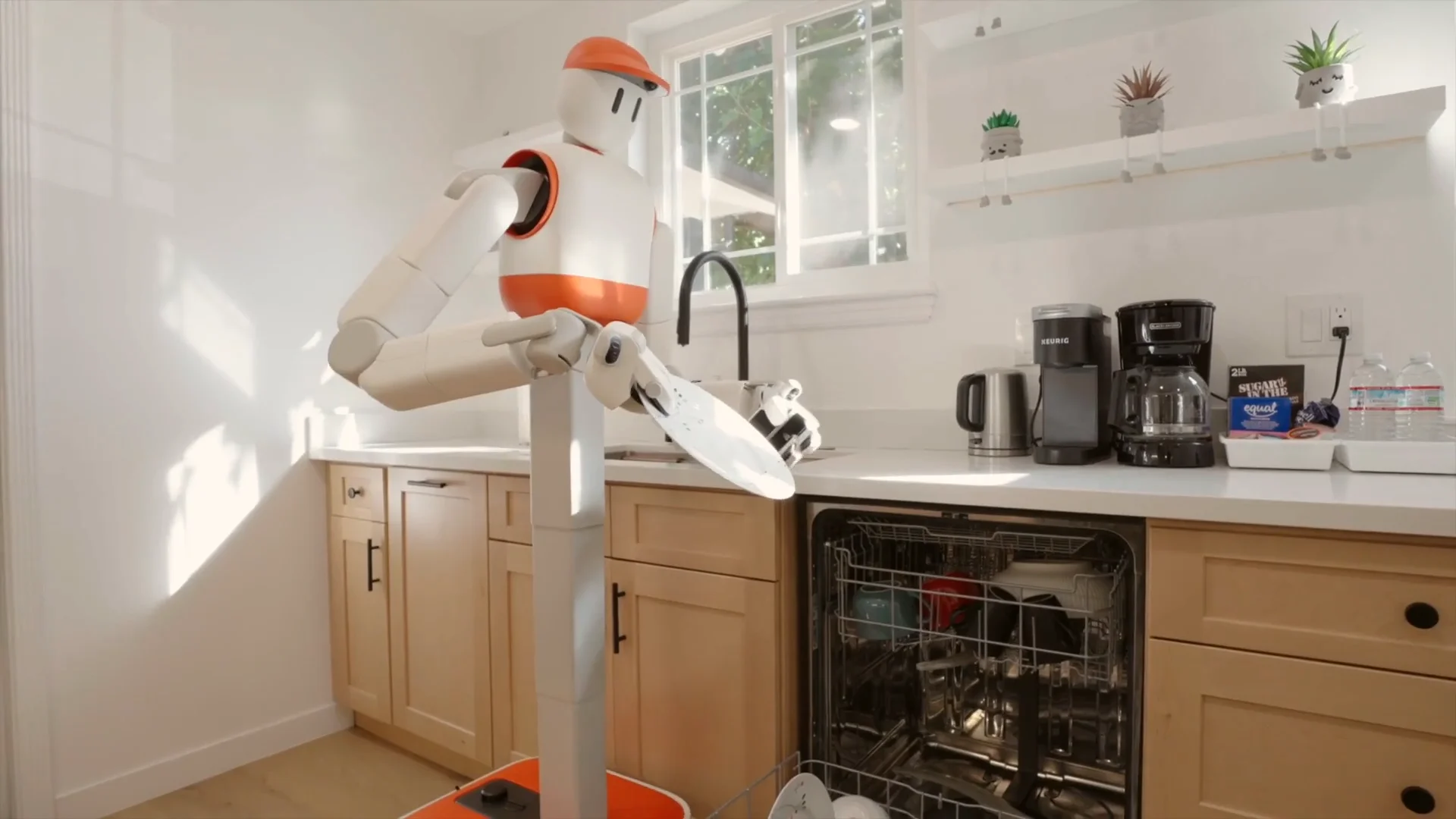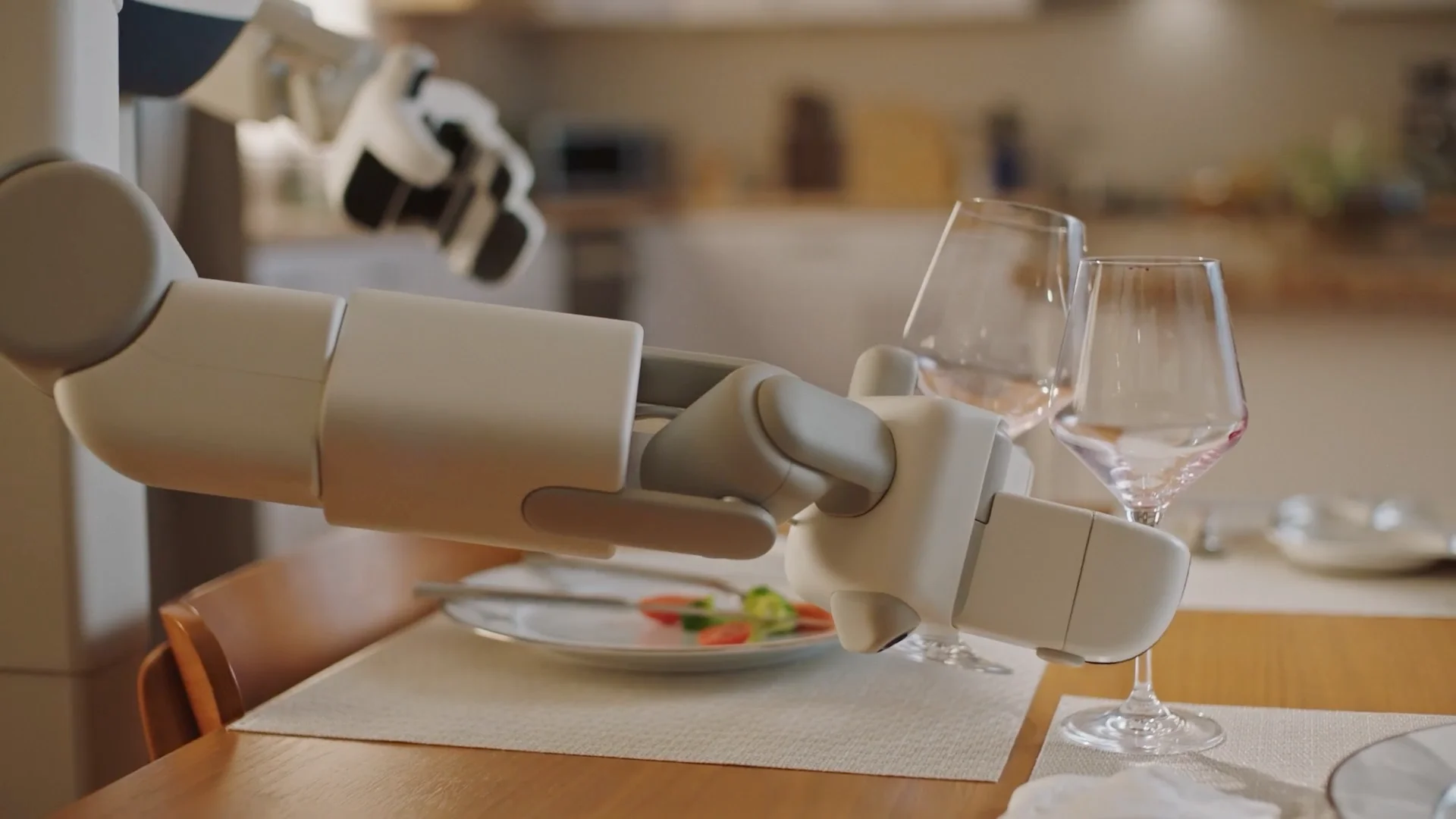- Published on
Sunday Unveils "Memo": A Wheeled, Domestic Robot That Learns From $200 Gloves

After months of stealth development and a week of carefully orchestrated social media teasers, Sunday has officially revealed "Memo," its flagship general-purpose home robot.
The reveal confirms the company's divergence from the humanoid form factor favored by competitors like Tesla and Figure. Memo is not a bipedal walker but a wheeled, vertical-lift machine designed specifically for the "messy reality" of domestic chores.
Co-founders Tony Zhao and Cheng Chi are betting that the path to a "robot in every home" isn't through walking, but through a radical new approach to data collection that bypasses the industry-standard of teleoperation.
After 18 months in stealth, dozens of prototypes, millions of real-home demonstrations, and one final all-nighter, we’re thrilled for you to say hello to Memo
Hardware: Function Over Humanoid Form
Memo’s design prioritizes domestic utility over anthropomorphism. Standing 1.7 meters (5'7") tall and weighing 170 lbs, the robot moves on a wheeled base rather than legs. This design choice sacrifices the ability to climb stairs for increased stability, energy efficiency, and a run time of 4 hours on a single charge.
The robot features a telescoping "Z-axis" spine that allows it to reach from the floor up to 2.1 meters (6'10"), enabling it to handle tasks ranging from picking up objects off the rug to reaching high cabinets.
Perhaps the most significant hardware deviation is the end-effector. As hinted in previous teasers, Memo does not use a five-fingered hand. Instead, it utilizes a custom dual-gripper—a pincer-like tool designed to mirror the geometry of a human hand while optimizing for grip strength and precision.
Memo Technical Specifications:
- Height: 1.7 meters
- Weight: 170 lbs
- Reach: 2.1m (vertical), 0.8m (horizontal)
- Battery: 4 hours runtime, 1 hour charge time (0-80%)
- Cladding: Blend of rigid and elastic polymers (soft touch)
The "Data Deadlock" and The Glove
While the hardware is distinct, Sunday’s primary innovation lies in its AI training pipeline. The company argues that the robotics industry is stuck in a "data deadlock" caused by reliance on teleoperation (remotely controlling a robot to teach it), which is slow and capital-intensive.
Sunday’s solution is the Skill Capture Glove.


Rather than building a fleet of robots for teleoperators to control, Sunday distributes these gloves—which cost roughly $200 to produce compared to $20,000 for a teleop rig—to humans in real homes. These "Memory Developers" perform chores naturally while the gloves record high-fidelity motion and force data.
The company claims to have shipped over 2,000 gloves and is collecting data from 500 homes.
To bridge the gap between human and machine, Sunday developed Skill Transform, a software pipeline that converts human glove data into robot-compatible movements with a claimed 90% success rate. This allows the robot to learn from human dexterity without needing a human hand.
Regarding the "Memo" feature set. Current verified skills: • Dishes: Clears table, scrapes food, loads dishwasher. • Coffee: Pulls espresso shots. • Laundry: Handles piles/socks. The team notes they are "actively improving reliability" to ensure these function effectively
After 18 months in stealth, dozens of prototypes, millions of real-home demonstrations, and one final all-nighter, we’re thrilled for you to say hello to Memo
ACT-1: The "Zero Robot Data" Model
The result of this data pipeline is ACT-1, a foundation model trained on "zero robot data." Sunday claims this model allows Memo to perform ultra-long-horizon tasks that have previously stumped autonomous systems.
In demonstrated videos, Memo performs a "Table-to-Dishwasher" cycle, a task involving 33 unique dexterous interactions, such as scraping food waste, organizing rack space, and handling fragile wine glasses.
Critically, the company highlights Zero-Shot Generalization. By training on data from hundreds of diverse homes, ACT-1 reportedly allows Memo to operate in environments it has never seen before, such as Airbnb rentals, navigating around unfamiliar floor plans using 3D maps.
Availability: The 2026 Beta
Despite the advanced demos, Sunday is setting realistic timelines for consumer availability. The company announced a Beta Program scheduled for 2026.
Notably, the beta program will be free for selected participants, though it is currently invite-only. This aligns with CEO Tony Zhao’s view that early adopters should be enthusiasts willing to tolerate "rough edges" and potentially help teach the robot new skills.
Share this article
Stay Ahead in Humanoid Robotics
Get the latest developments, breakthroughs, and insights in humanoid robotics — delivered straight to your inbox.